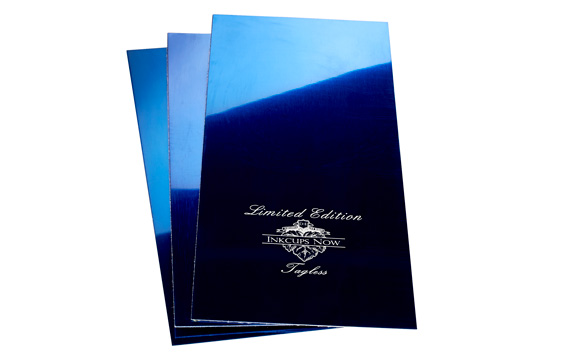
When it comes to pad printing, one of the critical process components is the printing plate holding the artwork to be printed. There are two widely used plate materials: laser engravable plates and photosensitive alcohol or water wash plates. Laser engravable plates are etched with either a CO2 or fiber laser, while photosensitive plates utilize UV light will harden, while the unexposed areas remain soft and wash away during the development process.
Both plate types offer unique advantages, with laser plates promising time-saving benefits, consistency, and high quality, while polymer plates offer a cost-effective solution. In this blog post, we will delve into the intricacies of these two plate-making methods.
Furthermore, outsourcing is a smart choice for companies not looking to take on an additional aspect of the process. Inkcups offers laser plate etching services quickly and professionally. We have dedicated plate making technicians to ensure that plates are etched exactly to your liking. Domestically plates can be at your doorstep in 1 to 2 business days.
To achieve high-quality results, the photopolymer plate process involves several essential items: an exposure unit, plates, film positive, water/plate developer, brush, dryer, and oven. This meticulous, multi-step procedure demands keen attention to detail. Although it has a long-standing history, its effectiveness endures.
For those seeking to master this technique, Inkcups offers an invaluable video resource. While the video may seem dated, rest assured that it contains all the vital information necessary to expedite the learning curve. Find the video here: How to Make a Photopolymer Plate for Pad Printing Machines.
Completing the entire photopolymer plate process usually takes a minimum of 15 minutes and can extend to approximately 30 minutes per session. Leveraging the size of your exposure unit, you may have the capability to produce multiple plates simultaneously. Photopolymer plates prove ideal for small businesses employing limited artwork variations. However, if frequent artwork changes are on the horizon, consider exploring laser plate making for greater adaptability.
Laser plate makers quickly and efficiently etch plates with incredible detail using computer-to-plate technology. This process utilizes the laser machine, whether it be a CO2 laser or fiber laser, ventilation, and plate material. Compatible plate material for laser plate makers includes Cobalt Steelback, Cobalt Ultra, DuraLaze, Onyx and Onyx Steelback. It should be noted that using a laser plate maker eliminates human error that is often a bump while creating photopolymer plates.
The laser plate making process is straightforward and easy. Simply set up your artwork, send it to the laser plate maker, align your plate, close the door, and start the etch. The laser plate maker will then begin to etch precise fine line, consistent graphics on the plate. Depending on the requirements of the etch this can be completed within minutes up to around 15 minutes (this is also dependent upon the laser plate maker themselves, as machines like the Cobalt ONE can etch with the upmost efficiency, under five minutes. More to come on this later.)
Inkcups offers a comprehensive range of plate makers, designed to cater to a wide variety of pad printing plate needs. The impressive lineup comprises the Cobalt 2000, Cobalt ONE, and Cobalt PRO, each boasting distinctive qualities and features to suit specific requirements.
When compared to polymer plate making, the Cobalt 2000 emerges as the most budget-friendly option. This cutting-edge machine harnesses the power of WFC Technology, ensuring rapid and effortless etching of intricate, fine line graphics. The Cobalt 2000 is an excellent addition to the B100 or B150.
Compact and comprehensive, the Cobalt ONE is a state-of-the-art fiber laser etching machine, integrating all aspects of laser-plate etching technology into a single unit. Impressively, it can etch images in under 5 minutes, delivering up to 30,000 impressions. Designed for near-constant use, the Cobalt ONE accommodates 24/7 production demands with ease.
Harnessing cutting-edge CO2 laser technology, Cobalt PRO excels in generating high-resolution graphics of up to 1500 dpi on an extensive range of plates. Packed with premium features like a closed-loop DC servo motor and autofocus, it guarantees top-notch etching quality.
For more information on the selection of laser plate makers that Inkcups has available can be found here: Laser Plate Makers.
Back to Blog Home
Add Your Comment